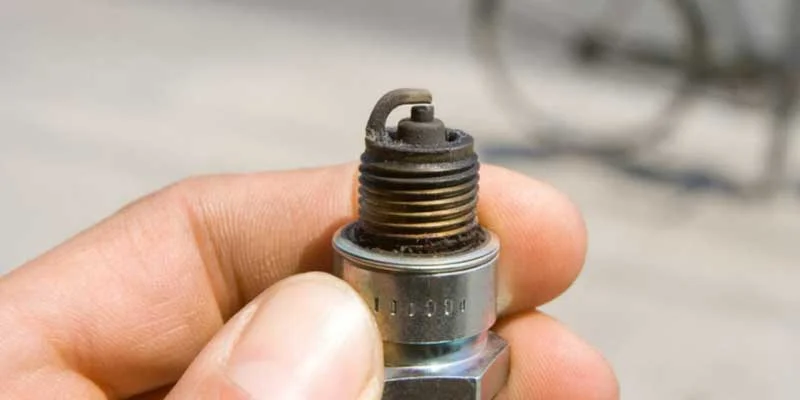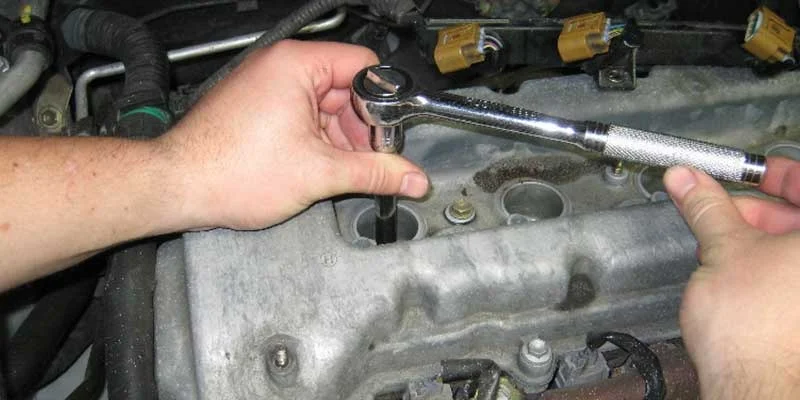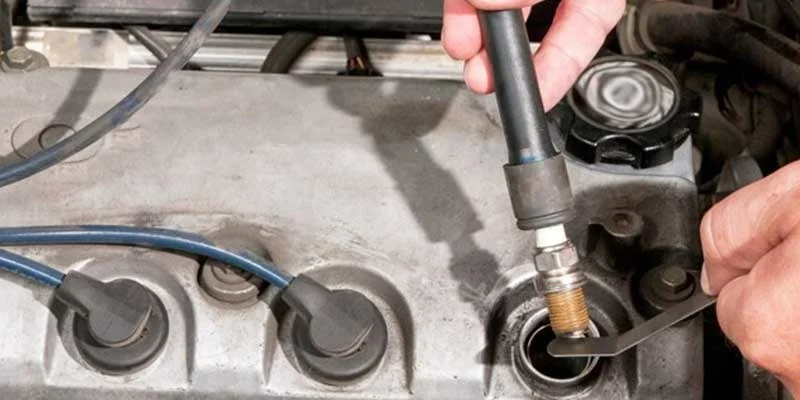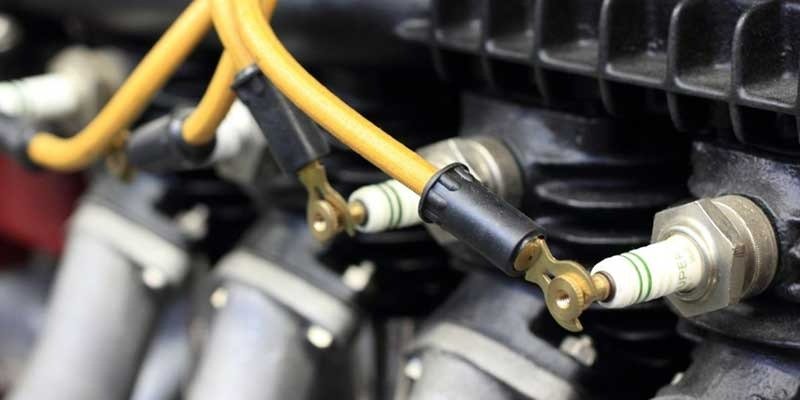Have you ever broken down on the highway only to realize that the spark plug was loose or even broken? What happened then? If you don’t know how to remove a broken spark plug, this comprehensive guide will help you excel in the task!
The modern car has thousands of parts working together to get you safely from point A to B. One of these parts that can go wrong is the spark plugs. These small pieces are located under the vehicle, and they ignite the fuel before it enters the combustion chambers. If the spark plug gets damaged, the car won’t start, and you’ll have to spend hours waiting at a repair shop.
A broken spark plug is a common problem that plagues drivers worldwide. In this article, we share some tips on removing a broken spark plug without damaging the surrounding area.
What do You Know About Removing a Broken Spark Plug?

A broken spark plug is not as worry-some as it seems if fixed in time. So, here are the of removing the broken spark plug:
Locating the Spark plug
To reach the spark plug, you need to remove the high tension wires that provide electricity to your plug. You can tug the spark plug cable using a plier or a screwdriver to remove the coil pack bolts. I suggest going through some DIY youtube video sessions to understand the procedures.
Getting a New Spark Plug
With a wide range and quality of spark plugs available in the market, it is important to pick up the right spark plug. An iridium or platinum spark plug runs up to 100 thousand miles, while a copper spark plug lasts up to 20 thousand miles.
Things you need for broken spark plug removal
Here are some of the recommended tools you should arrange before you begin the task of removing the broken spark plugs:
- Ratchet
- Flashlight
- Hand Drill
- Anti-Seize
- Screwdriver
- Pb Blaster
- Penetrating Oil/Pb blaster
- Pliers
- Easy out extractor
5 Steps to remove the broken spark plug

If your car doesn’t start when the ignition key goes into the ‘on’ position, the chances are that one of the spark plugs has failed due to corrosion, debris building up in the bore or other damage caused by the engine. Your best bet for getting the car started again is to remove the faulty spark plugs and replace them with a new one.
Here are the 5 detailed steps to assist you on how to remove the broken plug:
1. Use a flashlight to locate the problem

Take a flashlight to locate the spark plug, a hollowed-out threaded portion in a cylinder head gasket. Use a smaller drill bit to drill down a small hole if there is not enough space to fit.
- Installing extractor
Take some penetrating oil, pour over the spark plug and leave for a few minutes. Pull out the spiral cut along with a bi-hex 12 point socket for easy driving out the square end. Now tap the extractor with a hammer into the hole. Please avoid using the large spiral cut tractor to expand the spark plug shell.
3. Removing The broken off Spark Plug
Now, loosen the two nuts attached to the top side of each spark plug until you see them moving freely. Once loosened, gently pull out the spark plugs using an old rag to protect yourself from electrical shock. Be sure to use extreme caution as there’s always a chance the plugs will break and fall inside your engine!
Some of the possible reasons why you need excessive force to remove the spark plug:
- Its been a long since the spark plug was installed
- The installed spark plug is cross-threaded
- Excessive force applied during the spark plug installation
- There are dirty threads inside the installed spark plug
Always apply the required torque while installing the spark plug and avoid dirty threads that cause a problem during the spark plug installation. The estimated torque on installing taper seat spark plugs is around 7 to 15 pounds, the removal of spark plug required 180+foot pounds.
Set your torque wrench on higher than 13 foot-pounds. It coats the threads with anti-seize compounds to clean them before installation. It is important for the spark plugs installed on the equipment stored outdoors or in an aluminium cylinder head.
4. Thread plughole
Often at the removal of old spark plugs, the threads get destroyed. You need to re-think the hole with the tap to fit the new spark plug. Use an air compressor attachment to blow out of the hole. Penetrating oil can simplify the task.
5. Installing a new spark club
Before installing the new spark club, you should clean the hole using compressed air. USe anti-seize for new spark plug threads and then start threading it to the new hole. Apply the required torque using a torque wrench to avoid any excessive force.
2. Cleaning The Spark Plugs

Some people think that removing a spark plug involves replacing it with another. It isn’t necessary. Unless the spark plug is not faulty or broken, you don’t need to replace it. Instead, follow these steps to clean the spark plug holes:
- Turn off the engine and disconnect the battery terminals.
- Use a wire brush to scrub away any gunk from around the spark plug hole. You should feel the gap between the piston and cylinder wall. Don’t let any dirt enter the engine since it could cause serious damage later.
3. Inspect The Plugs For Wear And Damage:
After cleaning, inspect the spark plugs for wear and tear. Check the outside of the head where you would normally find the spark plug socket. Here, you may notice oxidation, cracks, and chipping, indicating a worn-out spark plug.
It’s also important to check whether the rubber boot has been removed from the spark plug. While this shouldn’t happen too often, it does happen occasionally. If the boot is no longer securely attached, it can cause problems such as loss of power.
How Often Should I Replace My Spark Plugs?
The life expectancy of a spark plug depends upon several factors, including maintenance frequency. However, most experts recommend checking your spark plugs after every 30,000 miles. Check the manual for information specific to the car you own to check out the manufacturer recommendation.
What Is The Best Way To Determine Whether A Spark Plug Has Failed Or Not?

Some of the symptoms of a bad spark plug are:
- Rough idling
- Reduced Gas Mileage
- Hard start
- Engine Misfire
- Lack of acceleration
To check if the spark plug is bad, remove it and plug it into the spark plug cable. Now ground it on the frame and check if the spark is happening. If the spark plug turns blue, the spark plug is working fine. If the spark plug turn yellow or you notice no spark, then the spark plug is faulty.
How Long Does It Take To Replace A Spark Plug?
You can expect to spend between 5 and 20 minutes replacing a spark plug. You may find that you don’t need to change the spark plug yourself; however, most people agree that this is a job best left to professionals. It is especially true for hard to reach areas such as under the hood and behind the vehicle. Your local mechanic can help you diagnose any problems and safely fix your vehicle, so don’t hesitate to ask for their assistance. They’ll also give you tips on how to prevent further damage to your car.
Frequently Asked Questions
Why Should I Have My Spark Plug Checked At 100,000 Miles Instead Of After 10,000 Miles?
The original equipment manufacturer recommends changing the spark plugs after 30,000 miles. This recommendation was made to extend the life of the spark plugs, which were originally designed for high speeds.
However, if the spark plug is worn out before 30,000 miles, it could cause serious engine damage. The metal tip gets exposed when the spark plug wears down too far. Once this happens, the spark plug becomes ineffective and causes poor combustion.
How much does it cost to remove a broken spark plug?
Most of the spark plugs cost you between $16 to $100. However, the type and quality of spark plug you use lead to variation in pricing.
What happens if a spark plug breaks?
If you find that the spark plug is broken, never start your engine as it can instantly cause irreversible damage. If you do so, you may require to rebuild the entire motor instead of replacing the cylinder head.

My Name is Christopher Angels, and I am a postgraduate in mechanical engineering. Cars have always excited me as a child, and soon I decided to dive into the world of cars by pursuing mechanical engineering. I also worked as a Mechanic for over 3 years to understand Cars’ anatomy and how each part contributes to its working.
My Name is Christopher Angels, and I am a postgraduate in mechanical engineering. Cars have always excited me as a child, and soon I decided to dive into the world of cars by pursuing mechanical engineering. I also worked as a Mechanic for over 3 years to understand Cars' anatomy and how each part contributes to its working.










